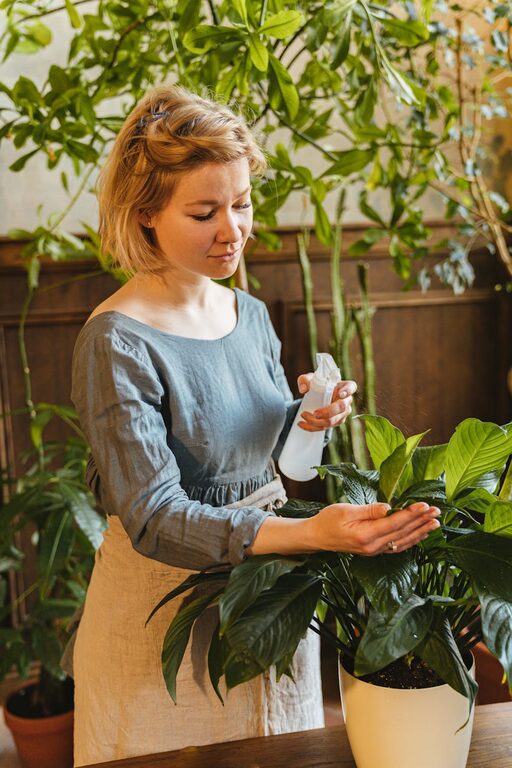Bringing houseplants into your living space adds life, color, and even a sense of calm. However, keeping these green companions healthy requires some knowledge and consistent care. Whether you’re a seasoned plant parent or just starting, understanding how to meet your plants’ needs is key to their success. In this post, we’ll explore practical tips to help your houseplants remain vibrant and thrive all year long.
Understanding Your Houseplants’ Basic Needs
Before diving into specific care tips, it’s important to understand that all plants require three fundamental things: light, water, and nutrients. However, the amount and type each plant needs can vary widely.
Light
Light is the energy source for plants to perform photosynthesis. Different plants have varying light preferences:
– Bright, indirect light: Many popular houseplants like pothos and peace lilies prefer bright but filtered sunlight.
– Low light: Some plants, such as snake plants and ZZ plants, tolerate lower light conditions.
– Direct sunlight: Succulents and cacti often enjoy direct rays for several hours a day.
Water
Water keeps your plants hydrated but excess or too little can be harmful. Overwatering is a common cause of plant health issues. Understanding your plant’s water requirements and soil drainage is essential.
Nutrients
Plants need nutrients from soil or fertilizer to grow. Using a balanced, appropriate fertilizer can supply essential minerals, especially during the growing season.
Practical Tips for Healthy Houseplants
1. Choose the Right Plant for Your Space
Consider the lighting and humidity conditions in your home before buying a plant. For example, if your room has little natural light, opt for plants that thrive in shade. Matching plant needs with your environment reduces stress for the plant and helps prevent common issues.
2. Use Well-Draining Soil and Proper Pots
Houseplants often suffer when roots sit in soggy soil. Use potting mixes designed for indoor plants, which often include components like peat moss, perlite, or bark to improve drainage. Also, ensure your pots have drainage holes to let excess water escape.
3. Water Smartly
– Check Moisture: Before watering, feel the top inch of soil. If it’s dry, it’s probably time to water. For succulents, the soil should dry out more between waterings.
– Water Evenly: Water until it drains through the bottom of the pot. This helps flush out salt build-up from fertilizers.
– Avoid Overwatering: Too much water can lead to root rot. If unsure, less frequent watering is safer than too much.
4. Provide Adequate Light
Place plants in spots that meet their light needs. Rotate plants occasionally to ensure all sides get light and grow evenly. If natural light is limited, consider using artificial grow lights designed for plants.
5. Maintain Proper Humidity
Many tropical houseplants thrive in higher humidity. Dry indoor air, especially in winter, can stress plants. To increase humidity:
– Group plants together.
– Use a humidity tray with water and pebbles.
– Mist plants lightly with water.
– Use a humidifier in particularly dry rooms.
6. Regular Feeding
During active growth periods (spring and summer), feed your plants every 4-6 weeks with a balanced, water-soluble fertilizer. Reduce feeding in fall and winter when many plants rest.
7. Prune and Clean Your Plants
– Pruning: Remove dead or yellowing leaves to improve appearance and prevent disease.
– Cleaning: Dust leaves gently with a soft cloth or rinse under lukewarm water to keep pores clear and maximize photosynthesis.
8. Watch for Pests and Problems
Common pests include spider mites, aphids, and scale insects. Check your plants regularly for signs like discolored leaves, sticky residue, or webbing. Early detection allows for easy treatment using natural insecticidal soaps or neem oil.
Seasonal Care Reminders
Spring and Summer
Plants are actively growing and need more water and fertilizer. Repotting is often best done during these months to provide fresh soil and room to expand.
Fall and Winter
Growth slows down, so reduce watering and feeding. Keep plants away from cold drafts or heating vents to avoid stress.
Conclusion
Keeping houseplants healthy is a rewarding activity that adds beauty and comfort to your home. By understanding your plants’ specific needs and following these simple care tips, you’ll help them flourish season after season. Remember, observing your plants closely and adjusting care as needed is the best way to become a confident and successful plant parent.
Happy planting!

